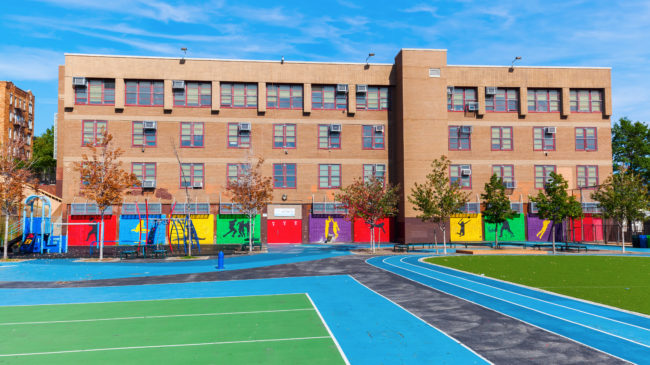Reason Foundation Working Paper 01-2020
Abstract
Public charter schools could theoretically experience fewer school climate problems than district-run public schools because of additional competitive pressures, autonomy, and improved matches between schools and students. Using publicly available data from the New York State Education Department, I analyze differences in 13 school climate problems between public charter school and district-run public school sectors. After controlling for observable differences in students and schools between sectors, I find that public charter schools tend to report fewer school climate problems than district-run public schools in New York state in the 2017-18 school year. Specifically, public charter schools report fewer assaults with physical injuries, assaults with serious physical injuries, forcible sex offenses, other sex offenses, weapons possessions resulting from routine security checks, other weapons possessions, and false alarms than district-run public schools; however, public charter schools tend to report more cyberbullying than district-run public schools. The charter school climate advantages tend to be more pronounced in New York City than the rest of the state.
Introduction
School quality is multidimensional (Blazar & Kraft, 2017). Schools are expected to improve student academic achievement, but they are also expected to keep children safe throughout the day. The U.S. Department of Education recently found that about 9 percent of students in high school had been in a physical fight on school property in the previous 12 months, and 20 percent of students in high school had access to illegal drugs on school property in the previous 12 months (Musu et al., 2019). In 2017, about 23 percent of students reported seeing hate-related graffiti and about 20 percent of students between the ages of 12 and 18 reported being bullied at school during the school year. Seventy-nine percent of public schools reported that one or more incidents of violence, theft, or other crimes took place, and 47 percent of schools reported one or more crime incidents to the police in the 2015-16 school year (Musu et al., 2019). Thirty-eight percent of teachers reported that student tardiness and class-cutting interfered with their teaching in 2015-16.
Access to public charter schools could theoretically lead to improvements in school climate because of additional competitive pressures, increased autonomy, and improved matches between schools and students. In New York, and most of the United States, students are residentially assigned to district-run public schools throughout their K-12 educations.1 Some economists would argue that residential assignment to schools and mandatory funding through property taxes create substantial monopoly power for district-run public schools (Friedman, 1955). In general, if a family is not satisfied with the educational services provided by the district-run public schools, they only have a few options, which are each ineffective or costly, especially for the least advantaged. The dissatisfied family can pay for a private school out of pocket while still paying for the district-run public school through property taxes, move to a residence that is assigned to a higher-quality district-run public school, vote for school board members who enact policies they prefer, advocate on behalf of their children to leaders of district-run public schools, or incur the costs associated with homeschooling while still paying for the district-run public school through property taxes. Public charter schools are independently run and students are not assigned to them based on their residences. Public charter schools are prohibited from charging tuition, cannot have religious affiliations, generally cannot use selective admissions processes, and must comply with federal safety, special education, and civil rights laws.2 Because public charter schools are additional educational options available to families and do not charge tuition, they reduce the transaction costs associated with opting out of residentially assigned schools, which theoretically increases competitive pressures in the public school system overall (Hanushek et al., 2007). By reducing the monopoly power held by providers of educational services, competitive pressures could improve academic outcomes such as math and reading test scores and non-academic outcomes such as school safety and climate (Chubb & Moe, 1988; Cordes, 2018; DeAngelis & Flanders, 2019; Egalite, 2013; Jabbar et al., 2019; Hoxby, 2007).
We might expect public charter schools to demonstrate an advantage with providing safe school climates relative to district-run public schools if families choose their children’s schools based on safety (e.g. Bedrick & Burke, 2018; Holmes Erickson, 2017; Kelly & Scafidi, 2013). We might expect any public charter school advantages to be more pronounced in areas with more competitive pressures. For example, public charter school advantages might be larger for New York City than the rest of the state since there are generally more public charter school options from which to choose in large cities. Similarly, public charter school advantages might be larger for elementary schools than schools serving other grade levels because there are generally more elementary schools from which to choose.
However, we might also expect any public charter school advantages to be less pronounced in areas with more because competitive pressures could lead to improvements in nearby district-run public schools (e.g. Cordes, 2018; Egalite, 2013; Jabbar et al., 2019).
Access to public charter schools might lead to better educational outcomes and school climates simply by improving matches between educators and students (DeAngelis & Holmes Erickson, 2018; Prieto et al., 2019). Public charter schools could experience fewer school climate problems if students are more interested in the material taught in the classroom and more aligned with the school’s mission. We might also expect public charter schools to demonstrate school safety advantages since they generally have more autonomy with disciplinary policies than district-run public schools (Shakeel & DeAngelis, 2017).3 Diliberti et al. (2019) found that 19 percent of schools in the U.S. reported that federal, state, or district policies on disciplining special education students limited their abilities to reduce or prevent crimes.
However, it is also possible for public charter schools to reduce student safety if families put more weight on other metrics of school quality or if public charter schools deceive families with advertising (Lubienski, 2007). It is also possible that families might not choose safer schools for their children because of possible information asymmetries in the education market (e.g. Ferreyra & Liang, 2012; Harris, 2017). Public charter schools might also fail to provide safer climates than district-run public schools since public charter schools tend to receive less funding per student than district-run public schools in New York (Batdorff et al., 2005; Batdorff et al., 2010; Batdorff et al., 2014; DeAngelis et al., 2018; Wolf et al., 2017).
This study empirically examines the three following research hypotheses:
Hypothesis 1: Public charter schools have fewer school climate problems than district-run public schools.
Hypothesis 2: Public charter school climate advantages, if they exist, are more pronounced in New York City than the rest of the state.
Hypothesis 3: Public charter school climate advantages, if they exist, are more pronounced in elementary schools than schools serving other grade levels.
Using publicly available data from the New York State Education Department (NYSED), I estimate differences in 13 school climate problems between public charter school and district-run public school sectors. After controlling for several observable differences in students and schools between sectors, I find that public charter schools tend to report fewer school climate problems than district-run public schools in New York state in the 2017-18 school year. Specifically, public charter schools report fewer assaults with physical injuries, assaults with serious physical injuries, forcible sex offenses, other sex offenses, weapons possessions resulting from routine security checks, other weapons possessions, and false alarms than district-run public schools; however, public charter schools tend to report more cyberbullying than district-run public schools. The charter school climate advantages tend to be more pronounced in New York City than the rest of the state.
The next section reviews the literature on public charter schools in general, school choice and reports of safety, and the stated preferences of families who choose schools. The data and methods are then presented. After that, the empirical results, study limitations, and policy implications are discussed.
Working Paper — School Sector and Climate: Evidence from New York

